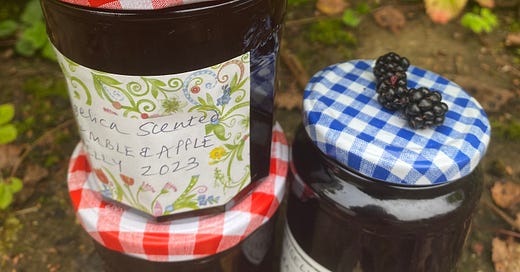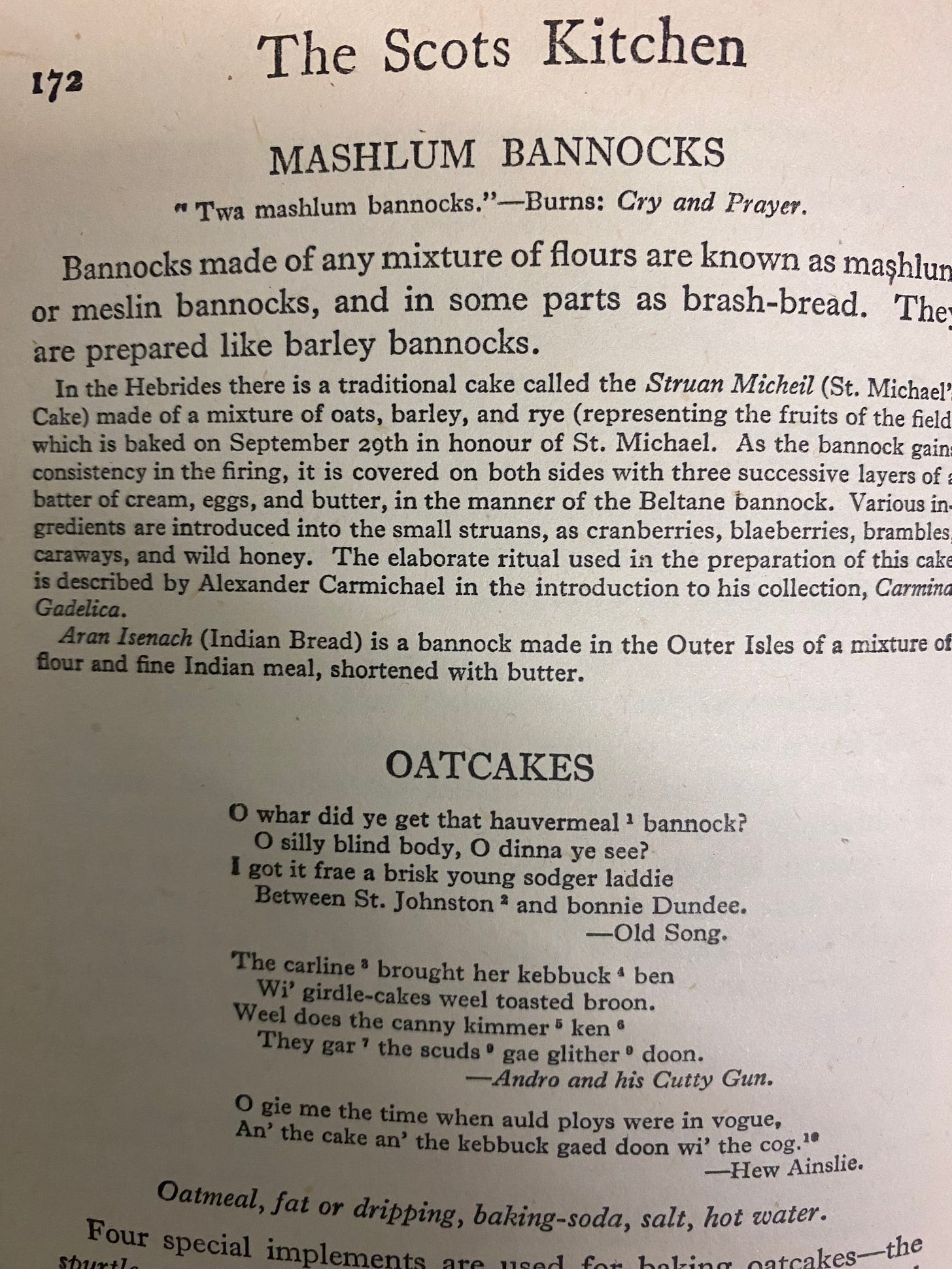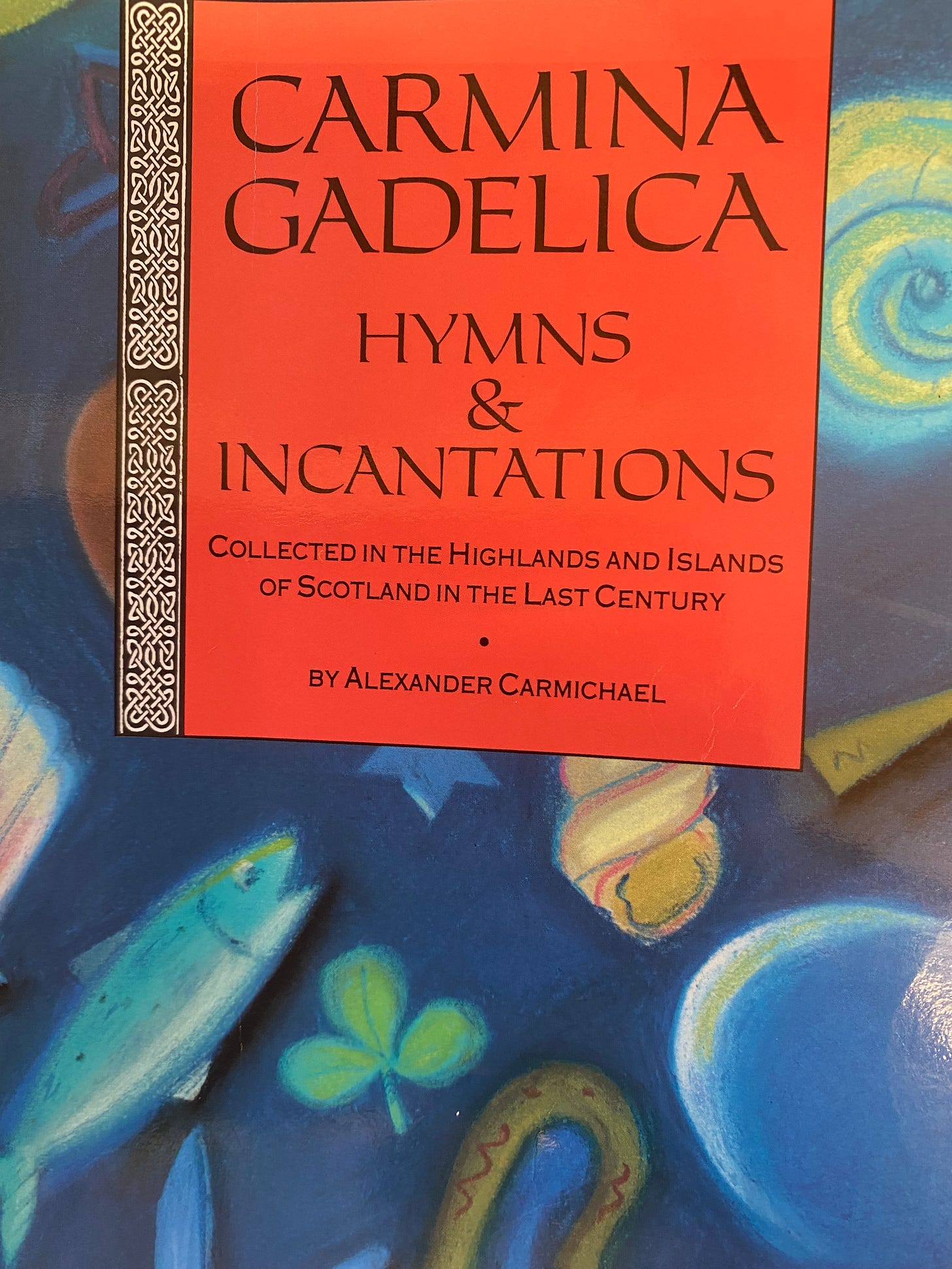Michaelmas September 29th
Struan, Bramble & Apple Jelly infused with Angelica and the Demise of Eating Goose
In the Celtic Calendar Michaelmas Day is celebrated with Struan Michael. In days gone by the ‘struan’ was made with the first sheaves (bound bundles of grain) of harvest. The Feast of St Michael the Archangel is still celebrated on the Isle of South Uist where I was fortunate enough to be given a piece of this layered scone-type bake. Delicious.
St Michael’s Day traditionally marked the end of harvest and was a time for celebration and thanksgiving for crops gathered in. The Michaelmas goose was fattened on end of harvest gleanings (Ruth 2:2 to read about gleaning).
In Medieval times the major saints’ days imprinted the seasonal cycle for the laity. Feast days gave meaning to daily life, interweaving the seasons with religion, and therein, division of time. The rhythm of the liturgical year helped the world go round. Memory of rent by feast association.
On September 29th Quarter rents were paid and labourers sought employment at Michaelmas Mop or hiring fairs - as notoriously mentioned in Thomas Hardy’s ‘The Mayor of Casterbridge’ when Michael Henchard sells his wife Susan – although this was not a typical transaction!
After Mass, the remainder of the day was pleasurable – a feast day with ale and goose fattened on stubble. For this reason it was sometimes known as Goose Day: Geese were traded at the Michaelmas fairs and gifted by tenants to landlords.
‘He who eats goose on Michaelmas Day, shan’t money lack, or debts pay.’
More recent accounts note that the goose wings were kept for dusting tricky house corners, the larger feathers used as quills and the small downy feathers as cushion or bedding stuffing.
There are varying alternatives for goose stuffing; some suggest raw apple to sweeten the meat, others offer onion and herb. Seasonal apples ensured apple sauce as a goose accompaniment. I must not forget to mention the value bestowed on goose fat, the rendering of which could then be stored for later use.
It's a shame that the tradition of eating goose has waned because it had lucky associations.
Jane Austen wrote: “I dined upon goose yesterday which I hope will secure a good sale of the second edition of my book.”
It is also said that Elizabeth Ist was eating goose when she heard of English victory over the Spanish Armada on St Michael’s day 1588.
The pretty violet Michaelmas Daisy or Aster is in flower, and, in the Western Isles, I can still find the occasional, albeit fading, salt tolerant sea aster. The leaves of which are delicious in stir fries.
The Scottish cookery writer F. Marian McNeil describes Struan Micheil in The Scots Kitchen and Alexander Carmichael writes in Carmina Gadelica of the bringing in of carrots on the eve of Michaelmas. These wild carrots were harvested by the women of South Uist Western Isles, in song:
Torcan fruitful, fruitful,
Joy of carrots surpassing upon me,
Michael the brave endowing me,
Bride the fair be aiding me.
Carmichael notes that an unblemished male lamb was slain and called Uan Micheil – the Micheal Lamb. This was eaten at the Michaelmas Feast. After breakfasting on the Struan, there were local processions and Martin Martin’s 1703 Account of the Western Isles of Scotland mentions horse racing in this case on on the Isle of Lingay:
“the natives are much addicted to riding, the plainness of the country disposing both men and horses to it. They observe an anniversary cavalcade on Michaelmas Day, and then all ranks of both sexes appear on horseback. The place for this rendezvous is a large piece of firm sandy ground on the sea-shore, and there they have horse racing for small prizes for which they contend eagerly. There is an ancient custom by which it is lawful for any of the inhabitants to steal his neighbour’s horse the night before the race and ride him all next day, provided he delivers him safe and sound to the owner after the race.”
Some Islanders referred to Michaelmas as the Riding Day. Alexander Carmichael documents the song of the Michaelmas Procession
I make my circuit
In the fellowship of my saint,
On the machair, on the meadow,
On the cold heathery hill;
Though I should travel ocean
And the hard globe of the world
No harm can e’er befall me
’Neath the shelter of thy shield;
O Michael the victorious,
Jewel of my heart,
O Michael the victorious,
God’s shepherd thou art.
Tradition says that blackberries cannot be harvested after Michaelmas when the Lucifer (the fallen angel defeated by Archangel Michael) spits or urinates upon the berries. St Michael’s role was that of chief celestial decision maker: heaven v hell. When Lucifer failed to make the heavenly grade and was cast out, he fell heavily into a bramble patch. This story may allow us a few days grace because Old Michaelmas Day fell on October IIth - i.e. before the calendar change in 1752 - when the Julian Calendar was replaced by the Gregorian one.
Calendars aside, 29th September does mark a shift in the length of daylight and country folk will note the move from summer to autumn.
Michaelmas Pie is filled with seasonal brambles and apples. Blackberrying or brambling provides an autumnal opportunity for family foraging with red stained hands, mouths, chins and clothes as a rite of passage. One to add to the waterfall of family memories, hopefully without too many thorns and tattered jackets.
Michaelmas also heralded the start of University Terms; this within my living memory - as a student at the University of St Andrews. So now the academic year has begun, and autumn has arrived.
Use equal quantities of brambles and apples.
Jelly making can’t be rushed, but it is very easy to make. Simmer the fruit during the day and allow the softened fruit pulp to drip slowly (this is the key to clear jelly) through a jelly bag, overnight. Measure the resulting juice and warm the liquid in a preserving pan before adding granulated sugar. In my quaint way, I use Imperial measurements 1Ib of granulated sugar to each pint of fruit juice.







Happy Michaelmas! Such beautiful reflections here.